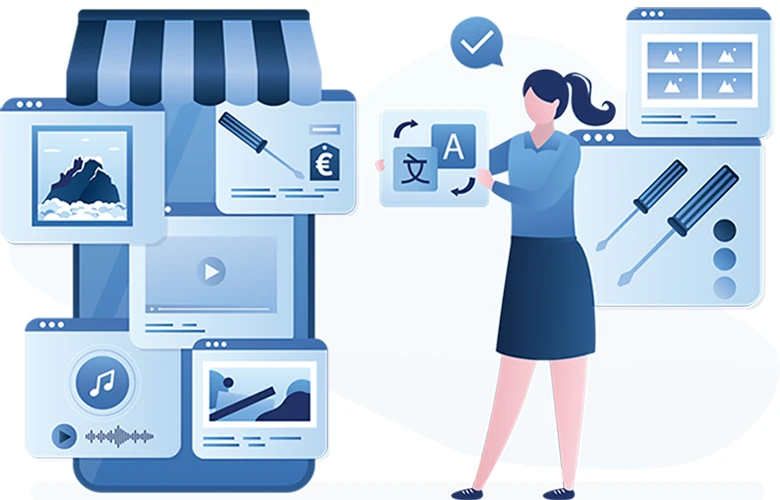I look forward to a personal consultation with you.
Call now +49 7031 9881-770
or send me a message
Herby Tessadri
Sales Manager and Authorized Signatory

PIM and e-commerce Optimally supplying trade partners with product data and boosting sales

The more standard products are sold, i.e., items that are produced in stock and are subject to high competitive pressure, the more important it is to be able to provide trading partners with the necessary product information, also known as e-catalogs. Of course, the same applies to your own website, but the leverage for sales via trading partners can be many times greater.
Data, data, data – how should it be provided?
Let's assume that your data is neatly organized in a PIM. Then you need a way to prepare the data specifically for the trading partner and an exchange format.
Key features for data preparation include:
Typical exchange formats are:
BMEcat 2005 is the newer standard and can contain multiple languages (BMEcat 1.2 only one language). However, BMEcat 1.2 is still widely used.
Standard classifications are also often required. These can be integrated in BMEcat format. In some cases, there are even specific BMEcat versions, such as BMEcat/ETIM Version 5 for the electrical industry (https://www.etim.ch/de/downloads/downloads/2-bmecat).
Excel
Excel is a very flexible exchange format, but it must always be agreed upon with the trading partner. In some cases, the trading partner specifies which columns are to be filled in and how, and may even specify the item numbers from their system, which you as the manufacturer must then map to your item numbers.
Advice
First, ask your trading partners which formats and, if applicable, standard classifications are required. Ideally, you will be able to fulfill all requests and satisfy your customers. In my opinion, it would be a mistake to try to agree on a common denominator for formats. Why not offer BMEcat in both versions and ECLASS and ETIM in the required versions? Why not offer Excel files in all their facets? Attempting to persuade trading partners to switch to one format may be successful, but as a market-leading company, you should also be a market leader in data provision.
There are basically two approaches on the system side. Either the PIM supports the required formats and classifications, i.e., it is fully integrated, or it requires a third-party tool that processes data exports from the PIM. The former is obviously ideal because you don't have to leave your familiar software and all the connections are stored in one system. If a third-party tool is required, you should ensure that the connection to the PIM is as smooth as possible, otherwise you will have to put a lot of effort into data reconciliation, mapping, reconfiguration, and data exports.
In terms of organization, you should have at least two employees who are proficient in this area. If you have tools that require less manual work and more brainwork, this is also an exciting topic. And it cannot be compared to the approach without tools, where you spend days laboriously preparing lists by copying and pasting, collecting and converting images and documents.
Conclusion
It cannot be that lists for important trading partners have to be compiled by hand, by specialists who spend days copying. That costs too much time, which you don't have in a competitive environment, too many resources, which you don't have, and too much joyless work.
Conversely, if employees responsible for providing data are asked whether they are happy when a trading partner requests product data, then the goal has been achieved:

Thomas Kern is managing director and founder of crossbase. He came up with the idea for the software and has more than 25 years of experience in PIM, MAM, print, e-commerce and everything that goes with it. As a mechanical engineer specializing in applied computer science, he can therefore provide our customers from industry with comprehensive advice. He also consults new customers on the introduction of crossbase and is responsible for project management. His project focus is on analysis, data model and ERP interface.
He also shares this knowledge with you in our blog and is happy to answer your questions:
t.kern@crossbase.de

